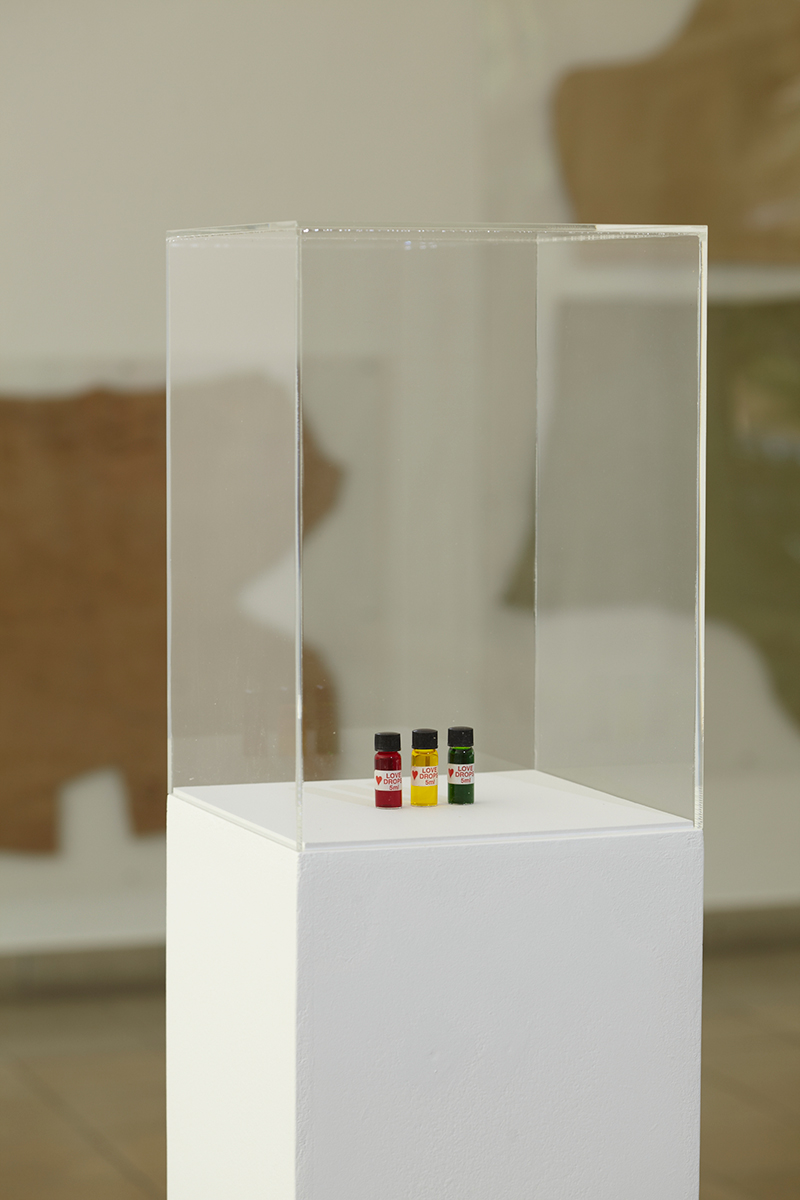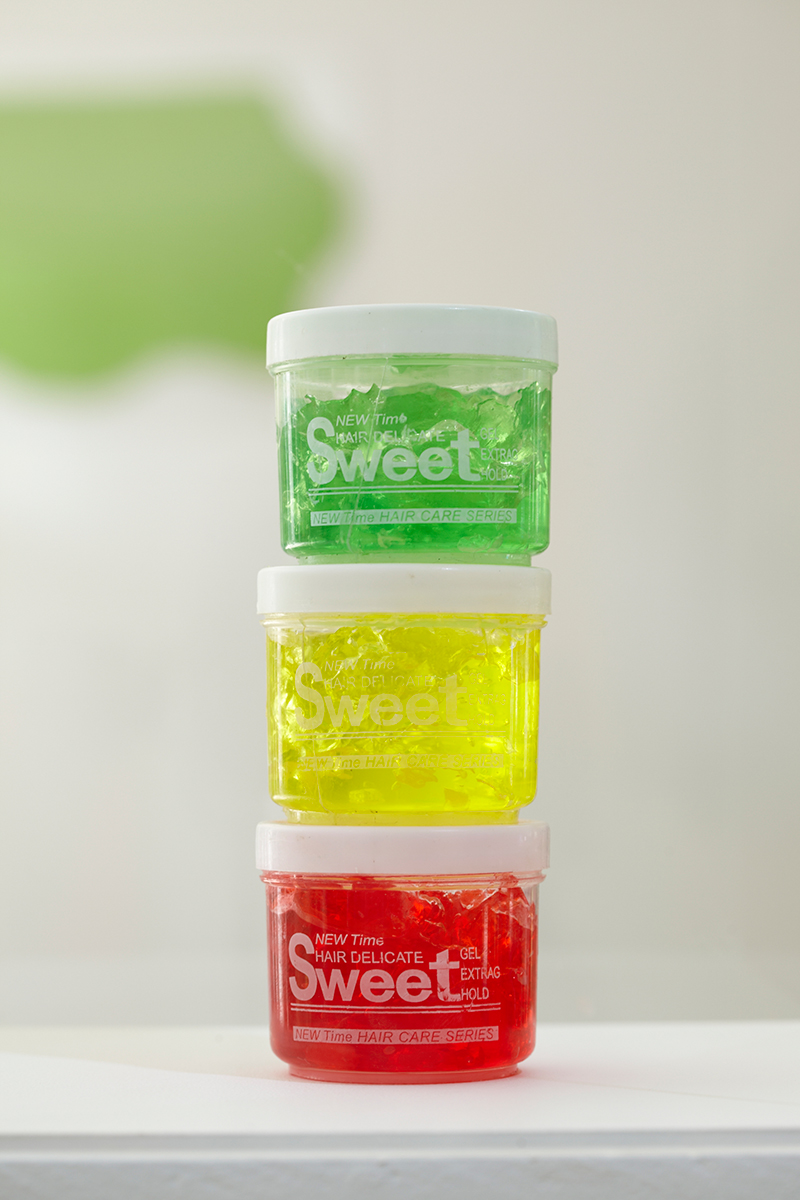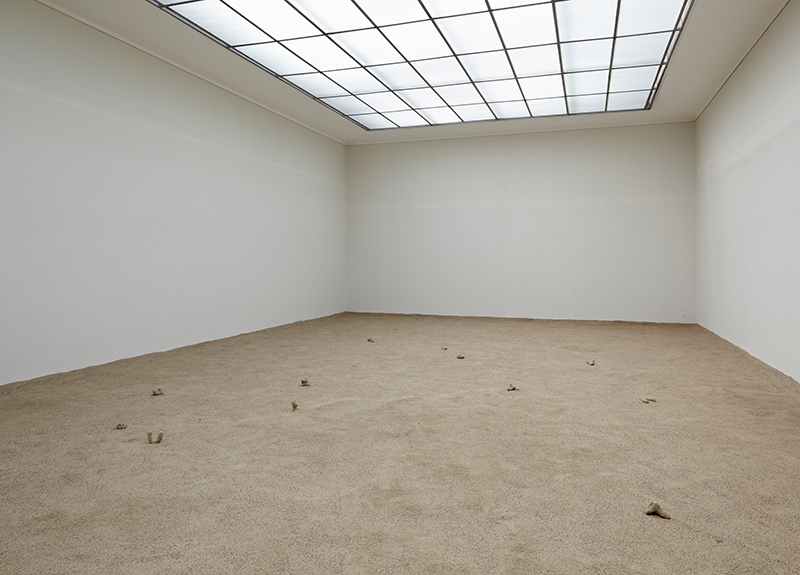
Resort
Curated by Sabine Rusterholz Petko
Kunsthaus Glarus, Glarus
21 August – 30 October 2011
AND SO CASTLES MADE OF SAND FALL IN THE SEA, EVENTUALLY
By Sabine Rusterholz Petko, director Of Kunsthaus Glarus
Jimi Hendrix’s famous refrain from 1967 has become a part of pop history as a metaphor reminding us that all our hopes and efforts will fade away in time. Hendrix composed his text around the fate of humans, but the refrain could also apply to the development of cultures and civilisations in a larger timeframe.
Vanessa Safavi plays with such “what if” scenarios. Her art is typically based on a clash of ideas, signs and materials from different places and times. She juggles the contrasts between ancient and industrial materials, the exotic and the everyday, stark minimalism and exuberant pop culture, fusing these polarities into images of cultural transformation. At the same time, the direction such transformations will follow remains undetermined. They may demonstrate the penetration of modern cultures and technologies into the last preserves of age-old nature, or they may suggest the imminent return of technological civilisation to primitive forms of existence. For this purpose, sand serves the artist as an especially ambivalent material. It results from the natural decomposition and break-down of ancient rock, as well as from former solids of civilisation,while also serving as an industrial building material or the basis of new foundations for the future.
The two installations with desert sand, Plenty of None (2010), shown in Chert, Berlin, and Real Life is Elsewhere (2011), shown in the Kunsthaus Glarus, are irritating and poetic at the same time. The desert of sand, decontextualized in an exhibition space, can be interpreted in many ways. Its existential emptiness evokes silence, loneliness and contemplation but also drought and death; and simultaneously utopias and visions of an alternative way of life or even an alternative society can be projected onto it.
In the installation Plenty of None Vanessa Safavi lets synthetic sports clothing, preserved in epoxy resin, sink under a surface of sand. The items of clothing sticking up from the sand suggest the abandoned remnants of a desert crossing, such as the escape of migrants hoping for good fortune in Europe, or simply the forgotten leftovers from some trivial leisure-time game of a group of tourists. There is nothing to tell us about what finally happened, the fate of the owners, their failure or their success. Bits of clothing lie like islands of colour in the monotonous surface of sand. The synthetic sports gear, imprinted with the popular logos of leisure culture, forms a map of human activity, movement, perspiration and effort. The western culture of sport and leisure and its marketing strategies reached the transit countries long ago. Colourful T-shirts have become a status symbol and sport, especially football, looks like a way out of economic misery for many young people. Sunken in sand, their use-by date may already be past. And yet even half covered in sand their synthetic materials seem to defy degradation.
In her work Real Life is Elsewhere Vanessa Safavi has scattered simple objects made of sand and clay onto a stretch of sand that fills the room. The objects vary in form between human bones, simple and practical utensils and naïve handicrafts. They are reminiscent of enigmatic activities of a hermit’s life in the desert as well as playful leftovers from an untroubled day at the beach. In human history, the desert has always been a location for innocence and a simple existence close to nature. Many modern cultures project their longing for authenticity, purification and clarity onto the nomadic archaic life of ancient times. It is a mental refuge from the excesses of civilisation. It is where utopias and visions are rooted. Many pipe dreams have been given fictitious or even real life in the endlessness of the desert. The fragments in Vanessa Safavi’s installation may well be ruins of such “Castles Made of Sand”. In many science fiction films the desert is used as a post-industrial or even post-apocalyptic site for a once-modern culture that has collapsed into a pre-modern way of life. Visitors to the exhibition can only view the scenery of Real Life is Elsewhere from a distance, without walking on the sand itself. It becomes a parallel universe, leaving plenty of room for projections, longings and more fundamental associations between an apocalypse and the beginnings of a new culture.
In Vanessa Safavi’s work one finds a large number of references to Primitivism in the art of the 20th century alongside echoes from the art of the 1960s and 1970s, such as Land Art and the Post-Minimalism, Anti-Form movement or Arte Povera as well as the Brazilian Tropicalismo movement. Some of them also had the tendency to break out from the city centres and their galleries and museums, shifting artistic activity into the openness of nature and presenting previously unused materials and forms in exhibition spaces.
Of special interest in this connection is the work of Robert Smithson and his concept of the (non-)site. His non-sites in the exhibition space refer to real sites whose lack of order and whose denaturing prevent any simple categorisation and thus challenge us to think about the processes of civilisation. Robert Smithson is interested in modern types of industry, quarries and salt lakes, prehistoric layers of sediment and puzzling ruins of ancient and modern civilisation. He transfers rocks and debris from these places into geometric settings, like cartographic landscapes in the exhibition space and provides geological information and photographic documentation to go with them. In this way he tries to make the incomprehensibility of the places comprehensible as “three-dimensional cartographic metaphors” in abstract condensation. In the Yucatan Mirror Displacements, which he created in 1969 during a journey through Mexico with his wife, Nancy Holt, and the art dealer Virginia Dwan, he placed groups of quadratic mirrors into sites formed by nature but in a state of degradation, documented them in photos, removed them again and entered the sites on a map. Robert Smithson is always interested in the geological and mental layers of civilised materials that form in an intuitively selected site. He uses his work to explore the ideas of site and non-site, of real sites, whose dimensions are however impossible to grasp, and abstract-logical documentation through cartography, of centre and periphery, of form and formlessness and of visibility and invisibility.
Like Robert Smithson, Vanessa Safavi is a passionate traveller and her rather nomadic lifestyle leads her to many remote places. Moreover, she also explores sites virtually. She loves to travel to the most unobserved and forgotten sites by clicking a mouse on Google Earth, and in doing so she discovers abstract landscapes from the macro-perspective. In the exhibition space, however, she constructs fictitious micro-perspectives: she creates imaginary images, between dystopia and utopia, which could be presented in extreme enlargement on a screen only as coarse pixels. While Robert Smithson searched in vain for backgrounds to the ancient Mayan culture during his travels which parallel the Mirror Displacements and reaches the conclusion that “Yucatan is elsewhere”, Vanessa Safavi’s installation concludes that “Real Life is Elsewhere”. While Robert Smithson focuses on the incomprehensibility of cultural layers in real space and transfers their abstracted extract to the exhibition space, Vanessa Safavi constructs mysterious fictitious sceneries that she could locate in the empty spaces on the virtual map and which achieve their own metaphorical existence as imaginary images for the transformation of cultural processes.
The interest in topography and especially in cartography combined with images of what might be happening in empty parts of the map are matters that already concerned the explorers of the new worlds and also shaped perceptions of the Eurocentric world view. When they wanted to draw up maps of Africa, especially remote areas, as late as 1800 geographers of the colonial nations depended on the unreliable and sometimes fantastic descriptions and sketches of Greek, Roman and Arab merchants, some of whom were still influenced by the medieval cosmology of Ptolemaic cartography. Wild ideas abounded about what went on in the interior of the unexplored continent. Africa stood for everything unknown. The blanks on the map were a stimulus to projecting excrescences of the imagination combined with longings and fears, stories of weird foreign places and the loss of innocence. Today by means of satellites or the photographs on Google Earth we can get more or less realistic impressions of every imaginable place on earth. And yet, especially in the deserts, there are still blind spots in the middle of nowhere that are veiled from general perception and where no human being ever travels unless in the virtual world of satellite vision.
One of these places could well have been the ruined watchtower Bourj El Baroud on the sandy beach of the Moroccan coastal town of Essaouira, if this had not been, according to a local myth, the inspiration for Hendrix’s song “Castles Made of Sand”. This has drawn attention to the site and it has suddenly appeared on tourist maps, even though Hendrix didn’t visit Essaouira until 1969, two years after the song was released, and only on one occasion. But in this definite and yet also indefinite site, between the dunes of sand, such sceneries as those of Vanessa Safavi might be found, with lost items of clothing from migrants or tourists or mysterious hand-made objects of uncertain origin, which stimulate the imagination for the past, present and future of civilisation.
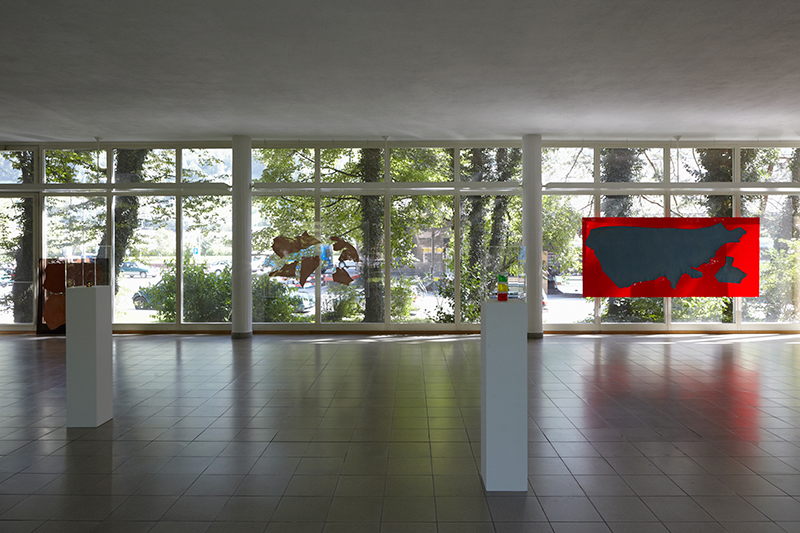






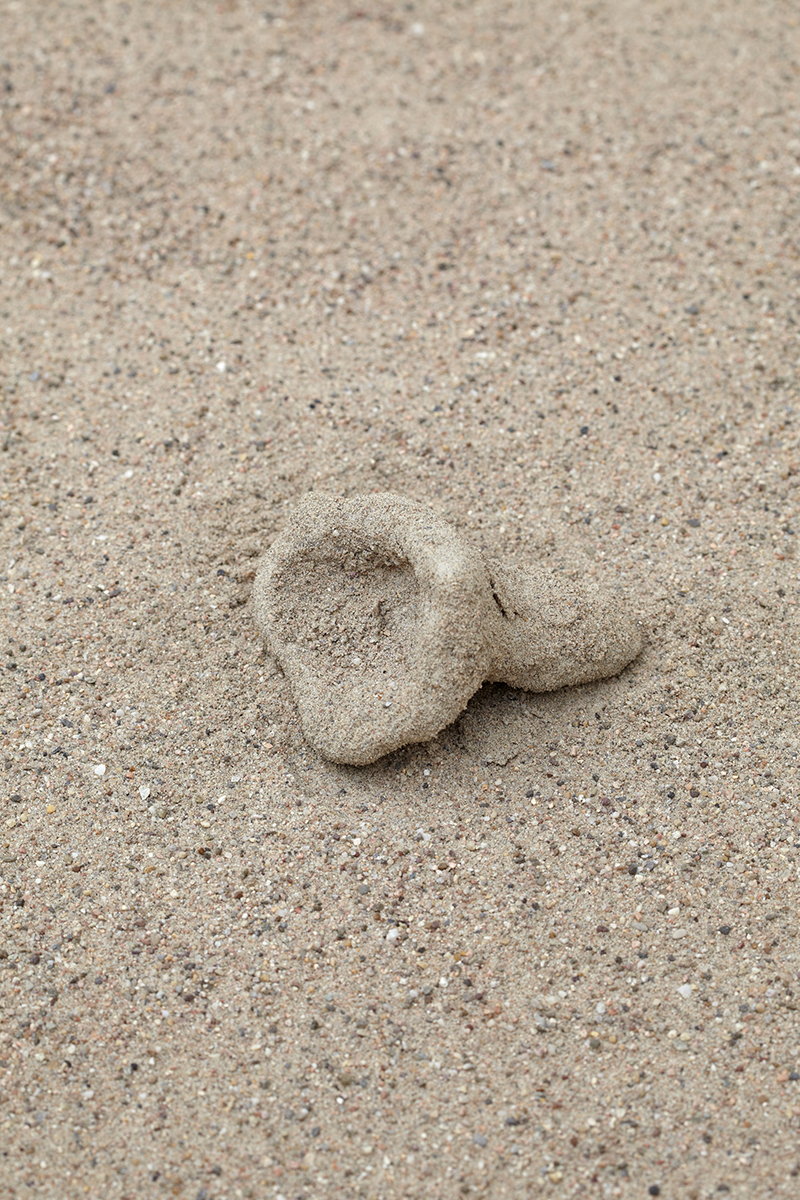 ´Real Life is Elsewhere´, 2011. Sand. Dimensions variable
´Real Life is Elsewhere´, 2011. Sand. Dimensions variable